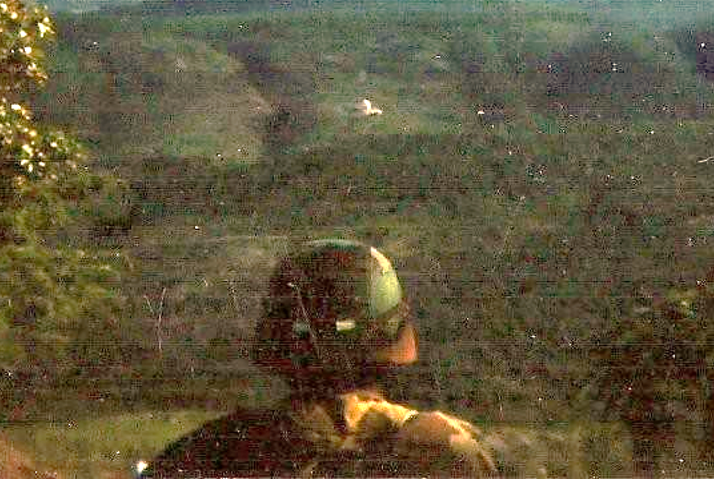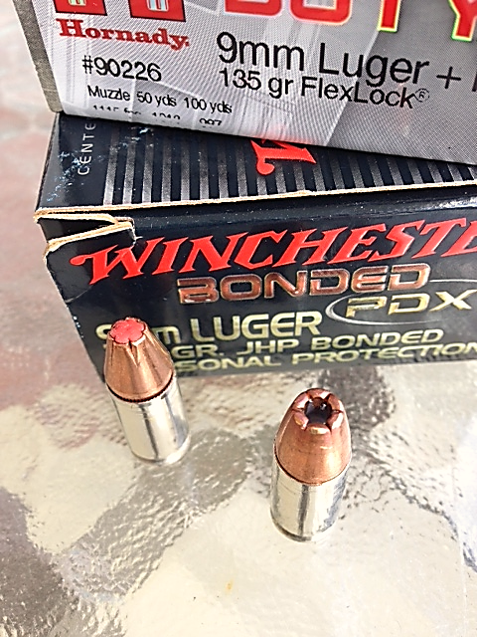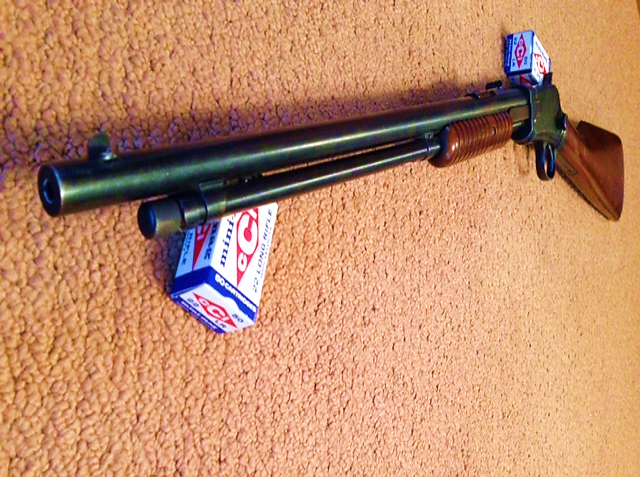In self-defense circles, the great caliber debate has raged on forever. As firearms technology has progressed, the variety of bullet designs and launch platforms has doubled, tripled, quadrupled … and more. Today, we enjoy an absolute embarrassment of riches when it comes to guns and ammunition. The downside is that it may be harder than ever to choose the right caliber for personal and home protection.
“Experty-type” people are often no help, offering everything from the ridiculous: “I carry a forty-five ‘cuz they don’t make a forty-six!” to the completely useless: “A handgun is for fighting your way back to the rifle you shouldn’t have left behind in the first place!”
What to do? After all, there isn’t much to go on. The bulk of empirical evidence suggests that getting shot by damn near any handgun is incredibly dangerous, but then many variables kick in that make it impossible to identify an objectively “most dangerous” caliber choice. This is why I finally stopped looking at the tools — they’re all pretty similar — and started focusing on the person using those tools.

See that little white puff in the distance? That’s a 105mm high-explosive round impacting. Photo: author’s collection
Fit and Feel
As we all know, fit and feel are very important when selecting a handgun. Just as shoes that are too big or too small will adversely affect our comfort and speed when walking and running, a handgun that is not a good fit will limit our ability to shoot well and consistently. But feel can’t be overlooked either — after all, there are lots of different shoes in our size that we just don’t like and are never going to buy and wear.
Feel also has a place in caliber selection. When I was a soldier, I worked as a Forward Observer, which means I located targets and acted as the eyes of the artillery or air support to destroy those targets. In this capacity, I saw thousands upon thousands of big high-explosive rounds do their thing, usually from a couple kilometers away. At that distance, they aren’t very impressive. Unlike in the movies, there is rarely a big exploding ball of fire. There’s usually just a big geyser of dirt that lingers in the air for a while. A volley of several rounds might impact the same general area, resulting in a whole lot of dirty haze floating around.
My point is this: the sight of the artillery shells exploding did not communicate their violence, even though I knew what kind of havoc they were causing on the ground. It was the concussion — coming like a tidal wave seconds after the impact — that told the story. It was a thunderous crash accompanied by a stomach-lurching sonic tremor that seemed to originate in my own pelvis and burst outward. I didn’t just see this power … I felt it!
Energy and Force
As I shoot a gun, I feel the blast and recoil transmitted back to me. The more blast and recoil, the greater the sensations of energy and force. The more energy and force available, the greater my belief in its ability to affect my target. Of course, there is a limit to how much energy and force I can actually handle. It really comes down to finding a caliber over which I can exert maximum control but one that still earns my confidence with its energy, which I feel every time I press the trigger. It should go without saying that I am not going to figure these things out by reading articles and watching videos. I can only discern where this is going to be by shooting live ammunition through real guns. Alternatives and enhancements such as dry fire and laser simulation have a place in my defensive preparations, but only after I’ve done the live-fire homework.
Think back to your earliest shooting adventures, or any time that you’ve seen a novice taking their first shots. Shooting a gun is a startling experience, and we often hear beginners exclaim that they didn’t realize it had so much … power! And for most of us, it isn’t too difficult to equate what we feel on the one end with something that is happening on the other. When we first began shooting, whatever gun we fired grabbed our attention. I recall being surprised at how much effort and focus it took for me to fully control and shoot with precision that little Winchester .22-caliber gallery gun. And I found a sense of accomplishment and empowerment: that trusty Winchester and I could hit what we aimed at, no doubt.
As time went on, my shooting experiences broadened and my tastes and interests evolved. Today, as a somewhat seasoned and definitely jaded gun junkie, that little Winchester is still a hoot to shoot. The difference is, while I will always respect and enjoy it, I’m not sure how quickly I would place my trust in it as a defensive firearm. The pop of that little rimfire round inspires noticeably less confidence than the bang from its bigger brothers.
Science and Faith
Caliber selection is really a kind of subjective alchemy that I believe consists of one part science blended with two parts faith. The science takes care of itself sooner or later, because it embodies objective things such as gun fit, gun operating system, and all those bullet design, weight, velocity, and diameter factors that we know will contribute to some greater or lesser degree.
My two parts faith are:
1. Faith in my ability, through training and practice, to efficiently control my gun and its recoil.
2. Faith in the power of my ammunition to deliver the needed force.

Modern jacketed or bonded hollow-point bullets are a must, regardless of their caliber. Photo: author
The faith in caliber selection also includes my admission that I don’t have much information about a self-defense shooting that isn’t happening yet. I am therefore trying to predict what my little handgun bullets will contribute to a big, ugly, immediately dangerous and completely unknown situation.
As a private citizen who doesn’t go out of his way looking for trouble, I also put considerable faith in not being around dangerous people doing dangerous things in dangerous places. However, there may come a time when the definition of what is “dangerous” isn’t up to me. The attitudes, techniques, and tools that I have chosen through research, critical thought, and personal experience will be on the line. My gun and ammunition must be paired with logic and evidence to have earned my trust for the coming moment of need. And in armed self-defense, that’s a pretty good description of faith.



Great article! Right on in every aspect from the beginning shooter to the experienced. Again more to it than caliber selection but the shooter.Then the best bullet selection for the intended use . Really enjoyed the article. I shoot with friends and this always comes up in a debate as well as where to carry. I am also a hunter safety instructor which emphasizes safety not so much shooting. Then I also do training in self defense. Men think the bigger the better and are difficult to train.
I used everything from the 44 magnum down to 9mm Luger, I have a collection of "defense chamberings, including the 357 Sig, 38 Special and the357 magnum . I found that the much ignored 327 Federal magnum was perfect for almost all my needs and worked great for my two daughters. It hits hard, recoil is mild and it's very accurate and the velocities are exceptionally high! IIt's one of my favorite's handguns now! I hope it survives, it's a great cartridge!
It couldn't have been said much better..... I would agree that the VERY BEST defense weapon is the one that each individual feels the most comfortable with. A bad situation is going to be stressful enough without your firearm adding to it.
An excellent paper. It parallels a study completed and the results published in Active Response Training: An Alternate Look at Handgun Stopping Power. The study and paper were completed by Greg Ellifritz. The study is summarized in an excellent You Tube Video: The Best Handgun Caliber - A Real World Study. To summarize, Mr. Ellifritz’s concludes, after analyzing an extensive number of defensive incidents, that caliber is less important than having a gun you feel comfortable with, shoot well and can hit what you are shooting at.
As a police officer in Southeast Washington DC I observed many a shooting victim when crack was new to the street . The 22 LR accounted for more expired victims than I would have expected . Sometimes with just one round . I believe in not only practice but sound training . But above all it is constant situational awareness that will keep you out of trouble . Use your head and save your behind . Carry and train with the best you can afford . Anything is better than nothing but common sense says if you don’t put yourself in a seedy part of town at 3 Am asking directions from a dude wearing a hoodie behind a Chinese carryout you wont have to pull your 380 and buss a cap .
i really appreciate you taking the time to articles like this, hopefully enough people, the right people, read and take the knowledge to heart that you have expressed. i cannot count the number of men that i have talked to about self defense that belief if they carry a big caliber gun they will 'win' the fight. most of them for the most part do not train. i also 100% agree with your statement "Just as shoes that are too big or too small will adversely affect our comfort and speed when walking and running, a handgun that is not a good fit will limit our ability to shoot well and consistently" i will use that in future conversations. i never considered that when trying to explain the importance of having a new gun buyer 'try on' several guns before making the purchase. not to mention the major importance of this if they plan to only buy one gun. i have seen many people buy a gun that they have 'read' and article about and it is the 'magic' gun. it is very frustrating and i take it as a challenge to increase their knowledge of the subject, usually to late (after they make the purchase). Keep up the great work. Dave
I started to carry 45 Cal. 1911 over 44 years ago as MP and went to 9mm as MP and hated the 9mm. But I own two 9mm guns today, but still love carrying the 45 cal. because of the stopping power. But if you have 380, 38 cal., 9mm 10mm, or 45 Cal., don't matter if you don't train with it. I have seen people around me talk about the gun, but never training - so why have them? As law enforcement for the last 44 years, you need to train as much as possible. The weapon is the last thing you want to use, but when it comes down to it you better be proficient with your shoots and that is better than the size of the bullet any day.
I am 82 years old and have been shooting since I was twelve years old. The first pistol I shot was a Colt 1911 then it only came in .45 caliber. First shot, I still remember it, I was told before I fired it how bad the recoil was going to be. I was five feet tall and less than a hundred pounds. So, I made sure I had a proper tight grip. Guess what? The recoil was not as bad as promised. Over the years I have shot lots of different pistols, a few rifles and one shotgun, which I hated. Now I am 6 feet two inches tall and 199 pounds. Over time I have come to believe caliber doesn't matter. Shot placement is all important. So, my first love was the colt. Today I still carry a pistol chambered in .45. Specifically a Glock 30. It fits my hand perfectly and I shoot fist sized groups at 7 yards. Only been carrying 6 years. The Glock is super reliable. I have only had one malfunction in all that time, a stove pipe. My belief is shoot what ever you can properly and most importantly SAFELY. Remember my three rules: 1. Shot Placement 2. Shot Placement 3. Placement!
Some years ago , I was called in to see a "man" who was shot by a girlfriend using a 22 caliber handgun. He walked in limping. The bullett struck his clavicle went down into his chest and proceeded to go into his left leg , existing one inch above his patella. He was 6 foot 3 inch and around 320 pounds. Didn't kill him, but surgery wise , he had his sternum cut into , and the incision ended above his umbilicus . That is a lot of surgery , and the next four days he paid dearly for the post surgery pain and then healing. Poetic Justice , yes?
I’ve done a lot of research & still have confidence in 38 special Hydroshocks will do the nod at self- defense distance given accurate shot placement.